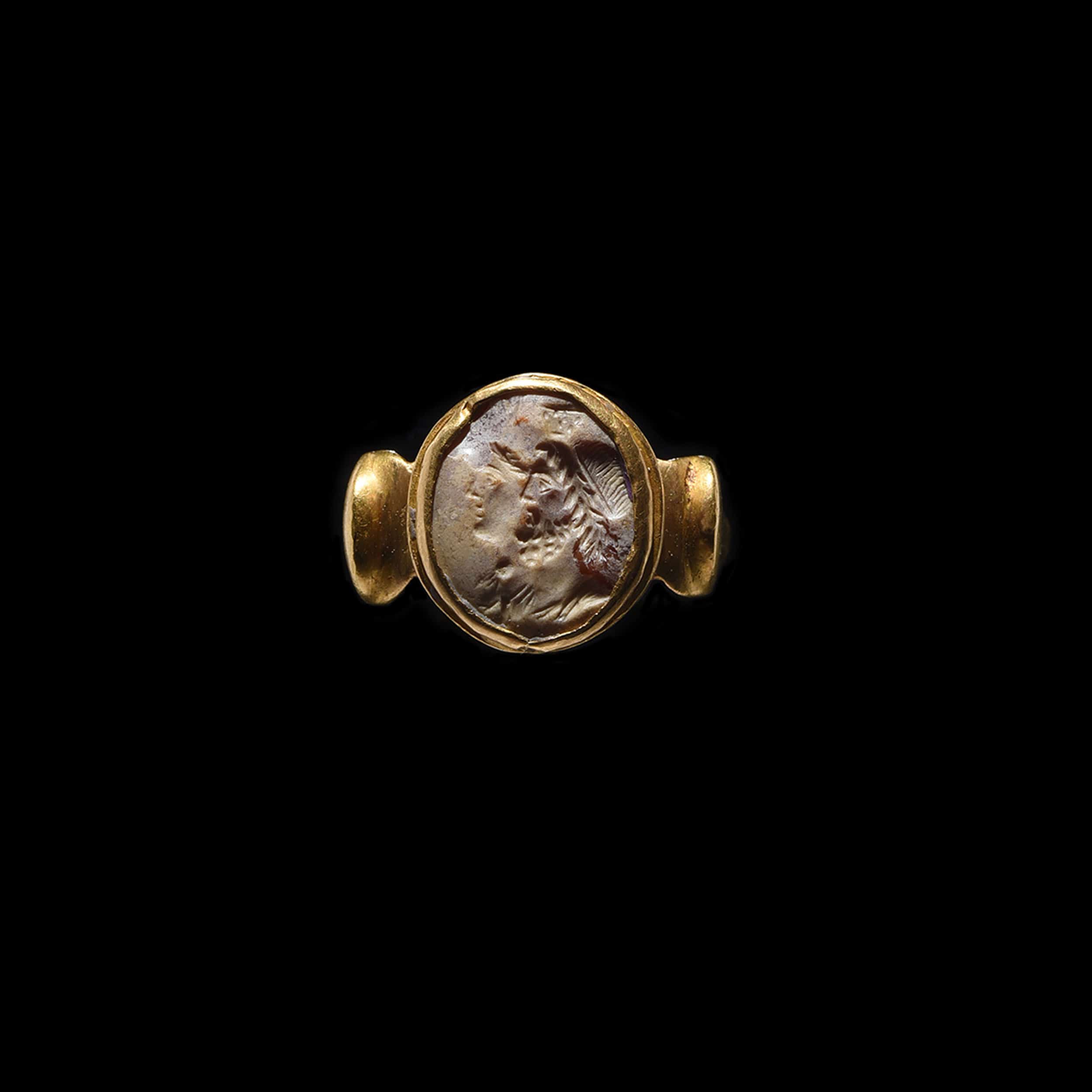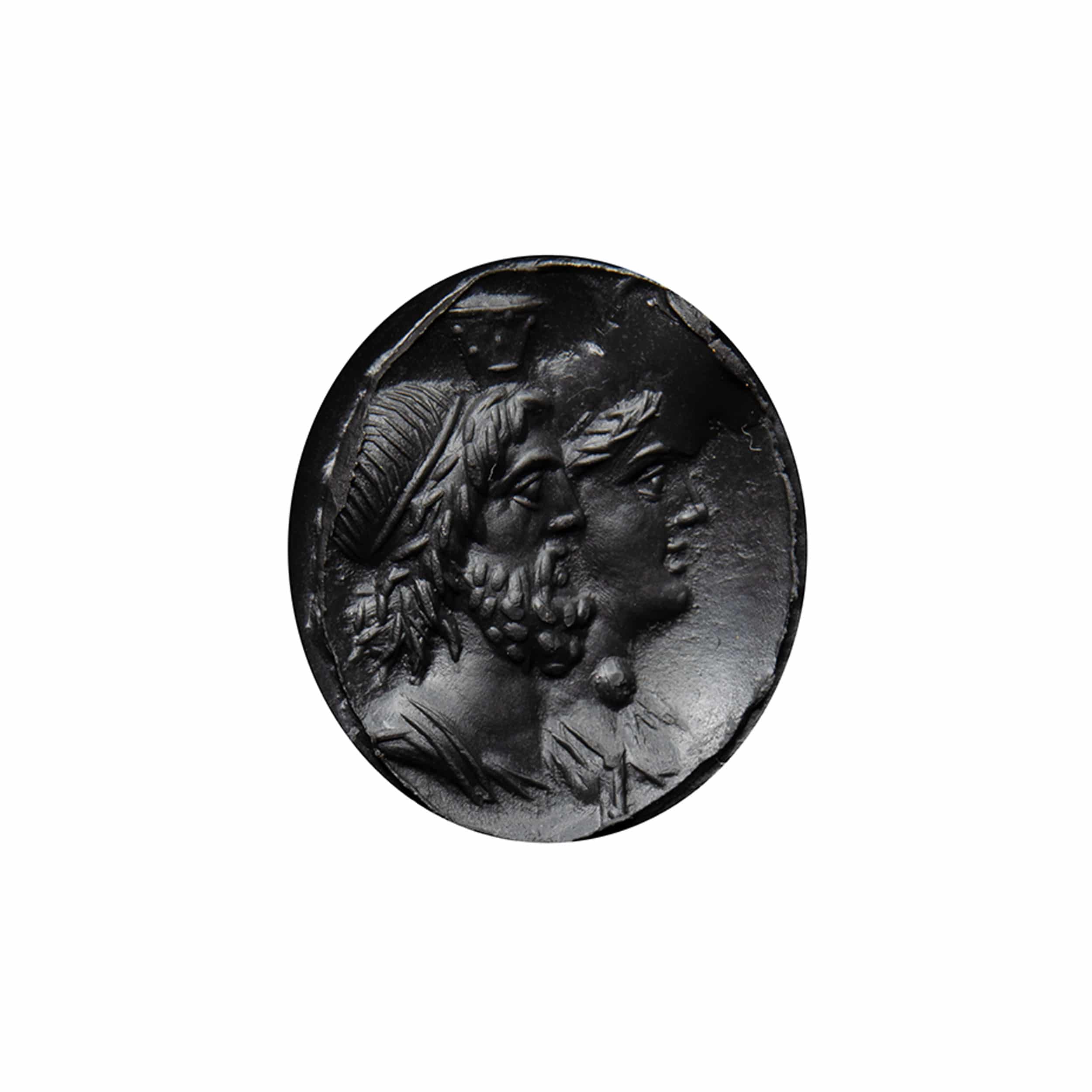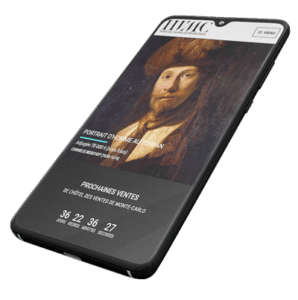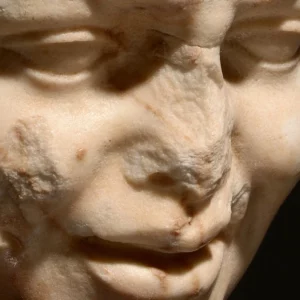Art romain, IIème - IIIème siècle
Intaille en cornaline brulée; léger éclat en haut à gauche ; 14 x 16 mm
Monture en or 24 cts ; diam (int) 20 x 17 mm
TD_56 ; 14,5 grs
Provenance
Paris, collection privée
Figure un double profil tourné vers la gauche représentant la parèdre Sérapis-Isis. Le dieu syncrétique est représenté barbu, la tête ceinte d’un bandeau et du modius. La déesse égyptienne quant à elle est coiffée de sa couronne à plumes (partiellement effacée du à l’éclat de la pierre à cet endroit). Elle porte une robe agrémenté du nœud isiaque représenté de manière stylisé. Au-dessus, au niveau du cou, un globe. La bague est formée d’un anneau de type hexagonal, aux sections aplaties à l’extérieur et plus arrondies à l’intérieur. Au centre, un chaton oval formé de canules, dont la plus haute enserre l’intaille, par des bords se refermant sur la pierre.
A ROMAN GOLD RING SET WITH A BURNT CARNELIAN INTAGLIO.
DOUBLE PORTRAIT OF SERAPIS AND ISIS. 2ND-3RD CENTURY A.D.
01/2 x 05/8 in. Intaglio. Figuring a double profile turned to the left representing the consort Serapis-Isis. The syncretic god is represented bearded, his head surmounted by a band and the modius. The Egyptian goddess is wearing her feathered crown (partially erased due to the chip of the stone in this zone). She wears a dress decorated with the isiac knot represented in a stylized manner. Above, at the level of the neck, a globe. Hexagonal hoop, with flattened sections on the outside and more rounded on the inside. In the center, an oval bezel formed of cannulas in which is inserted the intaglio.
Description complète








